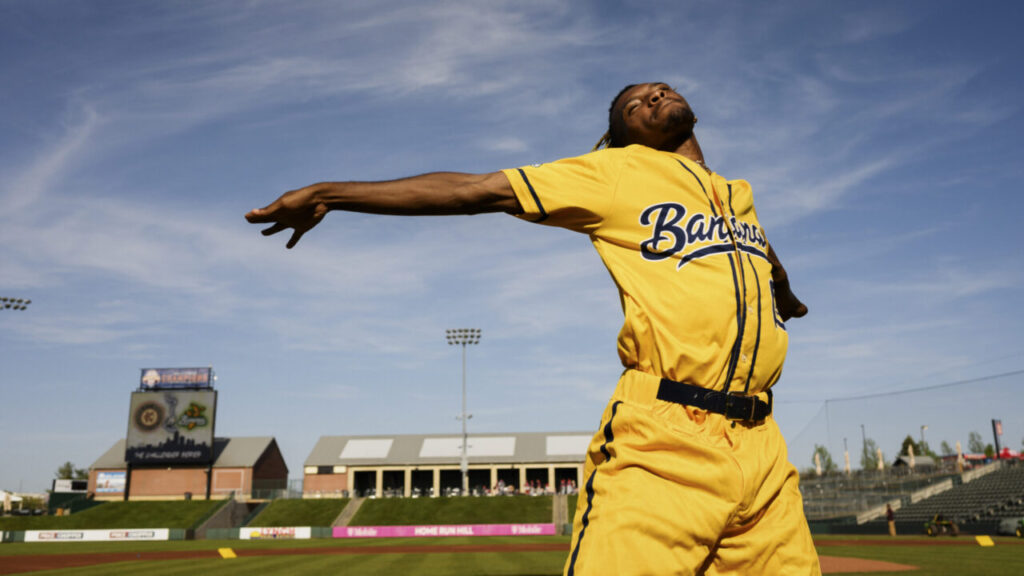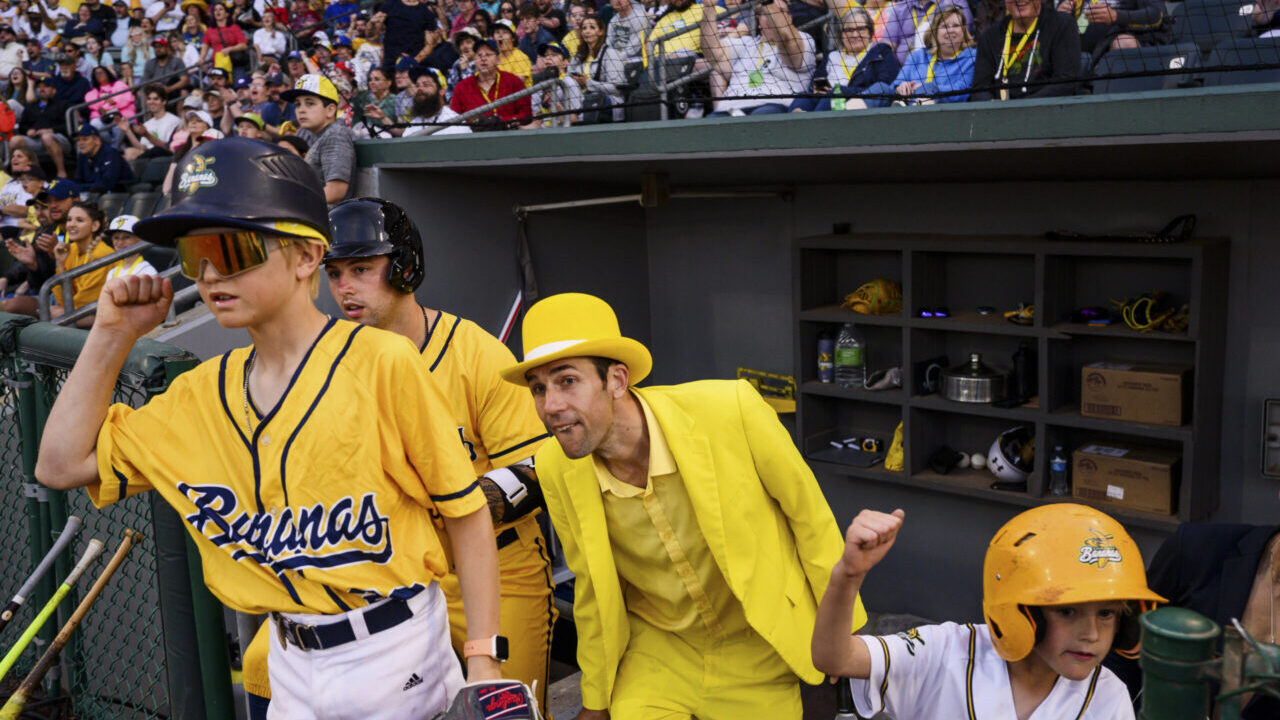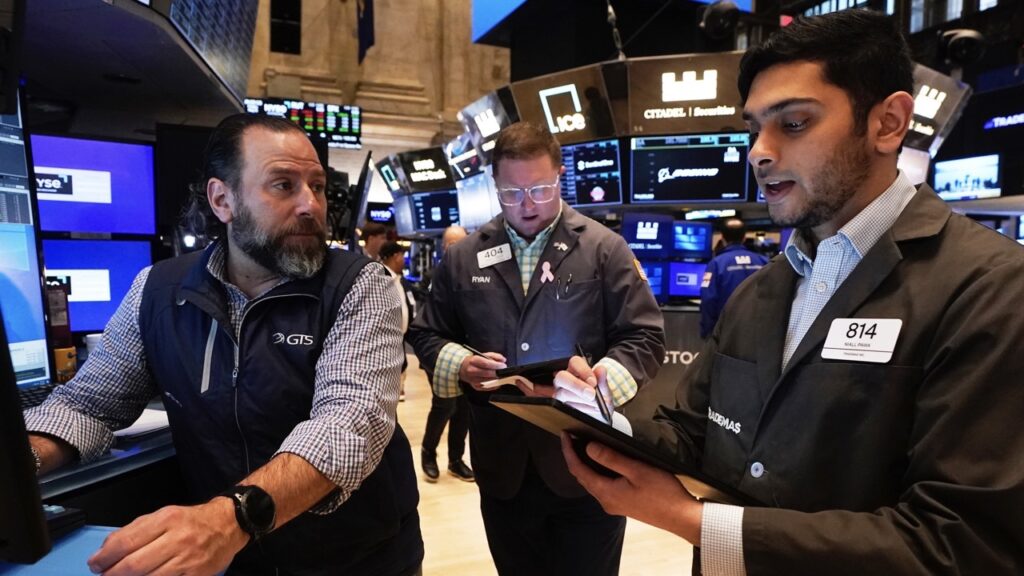Banana Ball is wacky, but it's also a competitive brand of baseball that prioritizes fun and fan experience, growing the game in a way that Major League Baseball might do well to learn from. (Shawn Brackbill/The New York Times/File)

- Banana Ball is wacky, but it is also a competitive brand of baseball that prioritizes fun and the fan experience.
- The Bananas have more than 3 million fans who have submitted information to the team’s ticket list, so MLB should pay attention.
- In Banana Ball, the Golden Batter rule allows a team to send any hitter to the plate in any spot once per game.
Share
|
Getting your Trinity Audio player ready...
|
BALTIMORE — The capacity crowd of more than 45,000 baseball fans at Oriole Park at Camden Yards stood, celebrating a walk-off home run.
There had been a buzz at the stadium all night. It started hours before first pitch, as fans packed merchandise booths and waited in food lines as soon as the gates opened. They were the kinds of lines typically seen on opening day and in October.
The game, last Saturday night, was closely contested. When it was over, the fans reluctantly headed to their cars.
They were not here to see an Orioles game (the Orioles had trouble selling out their two home playoff games last year) or even an MLB game.
They were here to see the Savannah Bananas, an independent barnstorming group of professionals who have, in their founder Jesse Cole’s words, “removed the friction in baseball.” They play a fast-paced, backflipping brand of the sport called Banana Ball, which has taken the sports world by storm, generating millions of fans and seemingly growing at warp speed.
“I get it now,” said Buck Showalter, a former Orioles manager, who served as an honorary coach in last weekend’s game against an opposing team called the Firefighters. He added, “My son said it was like a Caribbean World Series game on steroids.”
While some of Banana Ball’s rules would be tough to envision implementing in MLB — for example, foul balls caught by spectators in the stands count as outs — there are lessons about the fan experience and growing the game that the commissioner’s office and MLB’s 30 teams might want to consider.
Fans First
That is the actual name of Cole’s company, which more than lives up to its namesake. Cole has turned down what he says are “stupid numbers” from outside investors, as well as a seven-figure offer from a ticket broker. Instead, the Bananas use an internal system for everything from tickets to merchandise and pay their own fees and taxes on those items, meaning a $35 ticket is actually $35.
Yes, it costs Cole money, but he said the decision was a no-brainer. “I’m not trying to make a billion dollars,” he said. “I want a billion fans.”
Make Pregame an Event
In Banana Ball, the gates open 2 1/2 hours before first pitch, and there is a steady stream of player and fan entertainment that encourages people to get to the ballpark hours before first pitch (and potentially buy food and merchandise).
Most MLB teams open their gates 90 minutes before night games, though select games or groups may get in two hours early. Most of the time, the home team is done with batting practice by then, and there is little going on, if anything, other than a video blaring on an outfield video screen. Fans may catch the end of the road team’s batting practice, but for young fans, there is virtually no chance of seeing their favorite players or having any pregame interactions with them.
In Banana Ball, players go into the stands during the game (Cole does, too). And while it would be borderline irresponsible to ask Bryce Harper to mingle in the upper deck between innings, why can’t stadiums open early enough for home fans to watch batting practice? Why can’t players on the injured list who are with the team be required to spend a half-hour pregame signing baseballs? This is how you create meaningful fan interaction and ensure loyal customers for life, which leads to our next lesson.

Market Players Better
I attended the Aug. 2 game and was struck with how popular many of the players were. Fans were wearing jerseys with names on their backs I had never heard of. (Despite 15 years covering MLB, I’m a Banana newbie.)
My 9-year-old nephew waited more than two hours at a Dunkin’ Donuts that morning just to meet two Bananas and two Firefighters. Impressed, I checked TikTok, where Jackson Olson of the Bananas has 2 million followers (more than MLB stars Harper and Mike Trout combined), as well as deals with Reebok and Gatorade. The Bananas have 10.5 million followers on their TikTok account, which is more than MLB’s official account (8.3 million).
They will play in more than a dozen MLB ballparks this year, and they are selling out NFL stadiums, too. All four Fans First teams — in addition to the Bananas and Firefighters, there are the Party Animals and Texas Tailgaters — are made up of players who are recruited and paid to play at salaries higher than the minor leagues. All players on Fans First teams are selected for talent, playing ability and makeup. The latter is perhaps the most important.
Everyone on the Bananas truly wants to be there, and they do not complain about making trick plays or signing autographs. Cole says dancing was initially met with trepidation by all but a handful of players — until they saw how wildly popular it was. Now, everyone dances.
Be Creative With Rules
Blowouts do not keep fans engaged, so Cole tweaked the rules to make sure the ninth inning would always matter (a team gets an individual point for winning each of innings one through eight, but in the ninth, runs are unlimited). It sounds crazy, but it works, providing more thrilling late-game heroics. There is also a two-hour game clock, though games are often done before then.
Under Commissioner Rob Manfred, MLB implemented the pitch clock to cut out the sport’s dead time, a move that has received almost universal praise. Last year, he noted the sport was considering more rule changes, including the golden at-bat, which got some buzz at the owners’ meetings. That is a page right out of Cole’s playbook. In Banana Ball, the Golden Batter rule allows a team to send any hitter to the plate in any spot once per game.
The pitch clock was just the beginning. MLB has been open to many rule changes and adjustments, and it should be. In an era of three true outcomes (walk, strikeout, home run), getting the ball in play and showcasing the players’ athleticism, speed and defense are exciting.
Remember Your Mission
Some readers probably view the Bananas as the Harlem Globetrotters of baseball. (That comparison irks Cole, who points out that his players are competitive on the field and that every night is a different show.) But the Bananas have more than 3 million fans who have submitted information to the team’s ticket waitlist, so MLB should be paying attention.
Some of what the Bananas are doing is impossible to replicate. Everyone wants to see the show when it is in town only one or two nights a year.
But baseball may be barreling toward another lockout. MLB’s current collective bargaining agreement with its players expires after the 2026 season. Manfred has been meeting with players about a potential salary cap, and the relations between players and the league are contentious. If it is not careful, MLB may find that fans have moved on, perhaps in favor of another brand of the game that’s a little lighter on the wallet.
Banana Ball is wacky, but it is also a competitive brand of baseball that prioritizes fun and the fan experience. Isn’t that what professional sports were supposed to be about?
This article originally appeared in The New York Times.
By Brittany Ghiroli / The Athletic/ Shawn Brackbill
c.2025 The New York Times Company



















